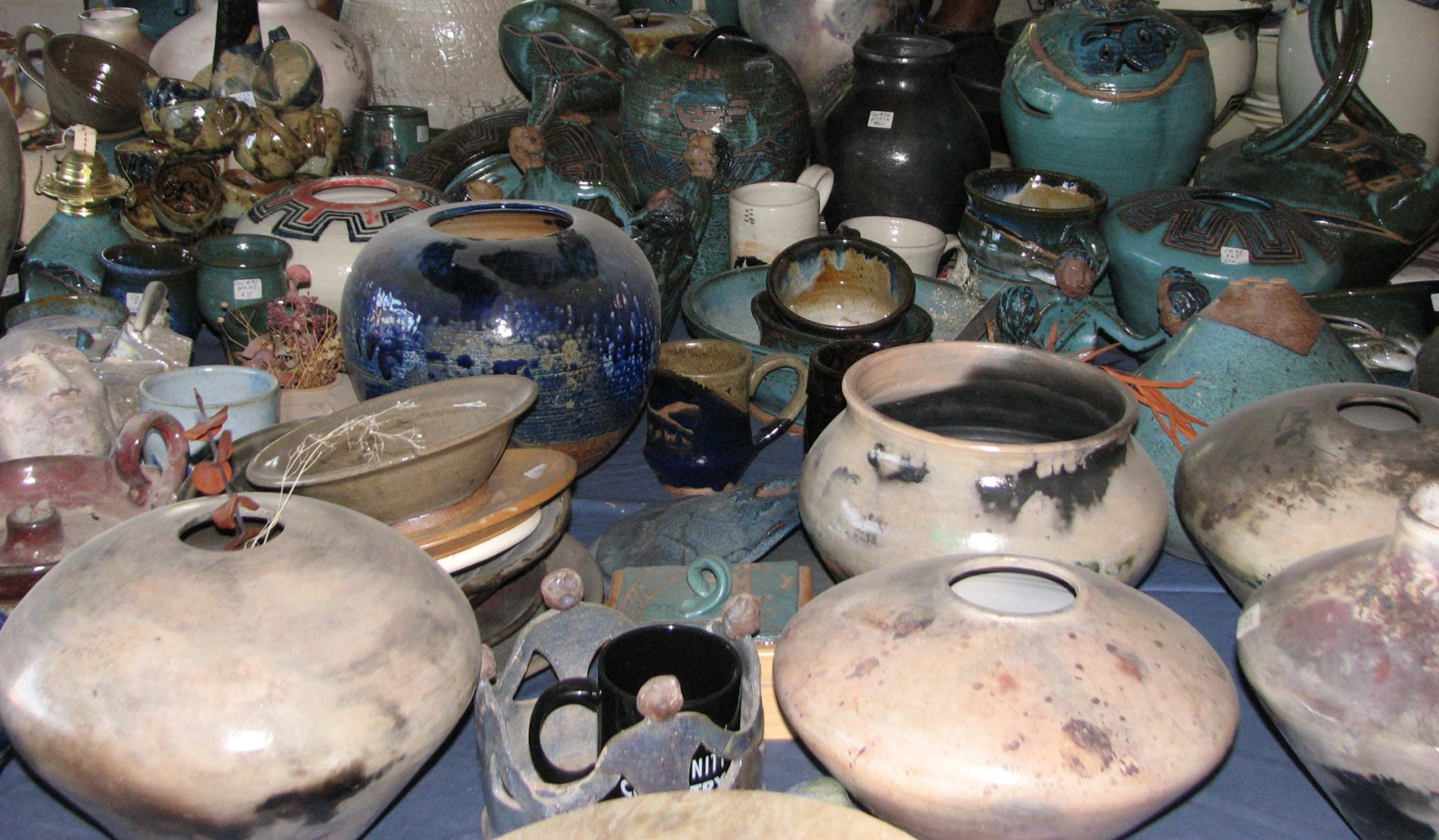Raku Pottery
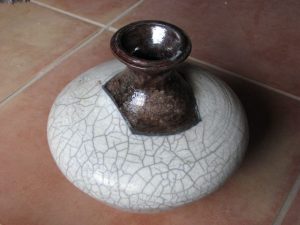 Raku is a Japanese word that can be translated as enjoyment, comfort, or happiness. It was first developed in the year 1580 by a potter named Chejiro. It was initially part of a tea ceremony but has undergone changes as British and American potters have adapted it.
Raku is a Japanese word that can be translated as enjoyment, comfort, or happiness. It was first developed in the year 1580 by a potter named Chejiro. It was initially part of a tea ceremony but has undergone changes as British and American potters have adapted it.
The process begins by heating a bisque and glazed pot to around 1900 degrees F or until it is red hot and shiny. Using thick gloves and tongs the red hot pot is quickly removed and placed in a metal can filled with combustibles such as sawdust, leaves, or newsprint. The pots can be removed in about 15 min
utes and reveal colors from deep black for an unglazed pot, or crackle white and bright coppers from glazes.
Pit-Fired Pots
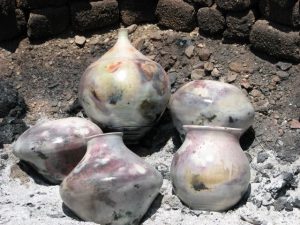
Pit firing is the oldest known method of firing pottery. Examples have been dated as early as 29,000 BC. While enclosed kilns have replaced pits in most firings, the pits create a unique effect that remains popular in many cultures. This method is especially popular among indigenous people in Africa and Latin America. Tucsonans are very familiar with Mata Ortiz Pottery from a small community in northern Mexico.
The procedure begins with placing bisqued, unglazed pots in a hole in the ground. They are often couched in sawdust and covered with combustibles such as dried cow manure, wood, and leaves before setting them on fire. The sawdust will create a deep black tint on the bottom of the pots and by sprinkling copper carbonate and rock salt near (but not touching) the pots, tints of orange, red, and green will adorn their surfaces.
Lumintierrias
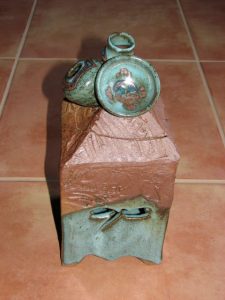 These pieces are adaptations of the popular southwest tradition of the “luminaria”, festive light that lines the sidewalks during holidays. The lumintierria is a pottery version that blends the earthware of the clay (tierria) with the light of an inside candle (lumen). Cutouts of desert creatures (including the human kissing couple) create visions of life where the flickering candle entertains us with dances of nature along our living room walls.
These pieces are adaptations of the popular southwest tradition of the “luminaria”, festive light that lines the sidewalks during holidays. The lumintierria is a pottery version that blends the earthware of the clay (tierria) with the light of an inside candle (lumen). Cutouts of desert creatures (including the human kissing couple) create visions of life where the flickering candle entertains us with dances of nature along our living room walls.
Functional with a Twist
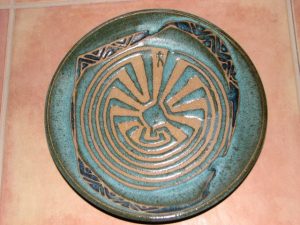
This is a collection of functional pottery that is decorated with non-functional twists. Lamps, teapots, dinnerware, and bowls become both a part of your every-day life while offering some unexpected color to your décor.
